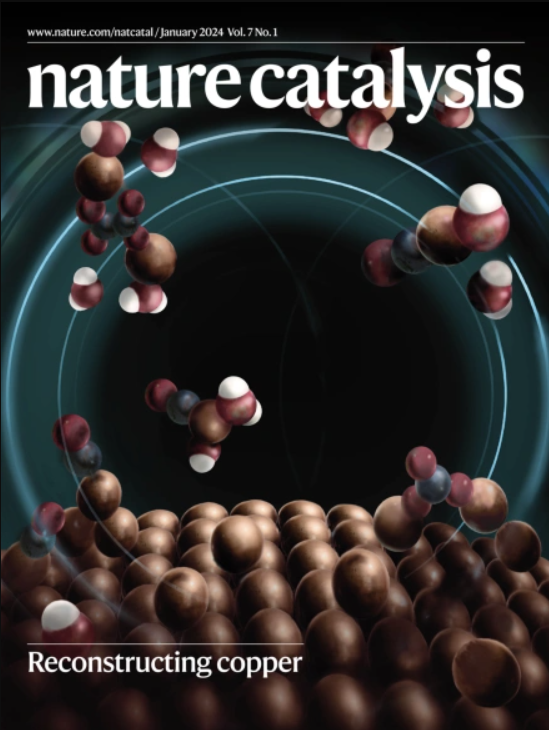了解锰调铁基催化剂在控制CO2加氢制烯烃选择性中的作用
IF 44.6
1区 化学
Q1 CHEMISTRY, PHYSICAL
引用次数: 0
摘要
对于铁基催化剂上的CO2加氢,揭示锰的促进作用和催化活性位点的性质仍然是阻碍靶向催化剂设计的一个挑战。本文利用原位x射线吸收光谱分析了锰在预处理和CO2加氢过程中对催化剂结构的调节。碳化铁表面由含mno层引起的反应诱导的修饰是抑制甲烷生成的必要条件,有利于C2-C4烯烃和C5+烃的生成。通过空间分辨稳态和时间分辨(微观)动力学试验结合密度泛函理论计算,对选择性变化进行了合理化。促进剂影响碳化铁从H2、CO2和C2H4生成表面物质的能力,从而控制表面C/H比,这对产物选择性起决定性作用。因此,设计高效的多组分多相催化剂需要对最佳催化剂结构有透彻的了解,特别是如何在反应条件下生成和稳定催化剂。本文章由计算机程序翻译,如有差异,请以英文原文为准。


Understanding Mn-modulated restructuring of Fe-based catalysts for controlling selectivity in CO2 hydrogenation to olefins
For CO2 hydrogenation over iron-based catalysts, revealing the promoting effect of manganese and the nature of catalytically active sites remains a challenge that hinders targeted catalyst design. Here we elucidate the manganese-modulated restructuring of such catalysts during preconditioning and CO2 hydrogenation using in situ X-ray absorption spectroscopy. The reaction-induced decoration of the surface of iron carbide with a MnO-containing layer is essential to hinder methane formation in favour of C2–C4 olefins and C5+ hydrocarbons. The selectivity changes were rationalized via spatially resolved steady-state and time-resolved (micro)kinetic tests combined with density functional theory calculations. The promoter affects the ability of iron carbide to generate surface species from H2, CO2 and C2H4, thus controlling the surface C/H ratio, which is decisive for product selectivity. Consequently, the design of efficient multi-component heterogeneous catalysts requires a thorough understanding of the optimal catalyst architecture and, in particular, how to generate and stabilize it under reaction conditions. Promoters are able to modulate the performance of catalysts for a given process, but this can be done through various mechanisms. Here the role of Mn as a promoter on Fe-based catalysts for CO2 hydrogenation to olefins is comprehensively investigated via spectroscopic and kinetic analyses. The promoter induces a restructuring of the catalyst surface, balancing the strength of the adsorption of reactants and intermediates.
求助全文
通过发布文献求助,成功后即可免费获取论文全文。
去求助
来源期刊

Nature Catalysis
Chemical Engineering-Bioengineering
CiteScore
52.10
自引率
1.10%
发文量
140
期刊介绍:
Nature Catalysis serves as a platform for researchers across chemistry and related fields, focusing on homogeneous catalysis, heterogeneous catalysis, and biocatalysts, encompassing both fundamental and applied studies. With a particular emphasis on advancing sustainable industries and processes, the journal provides comprehensive coverage of catalysis research, appealing to scientists, engineers, and researchers in academia and industry.
Maintaining the high standards of the Nature brand, Nature Catalysis boasts a dedicated team of professional editors, rigorous peer-review processes, and swift publication times, ensuring editorial independence and quality. The journal publishes work spanning heterogeneous catalysis, homogeneous catalysis, and biocatalysis, covering areas such as catalytic synthesis, mechanisms, characterization, computational studies, nanoparticle catalysis, electrocatalysis, photocatalysis, environmental catalysis, asymmetric catalysis, and various forms of organocatalysis.
 求助内容:
求助内容: 应助结果提醒方式:
应助结果提醒方式:


